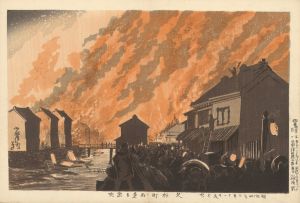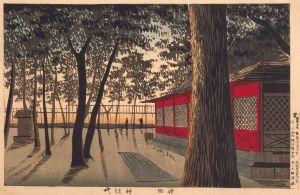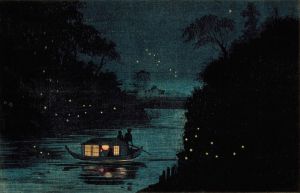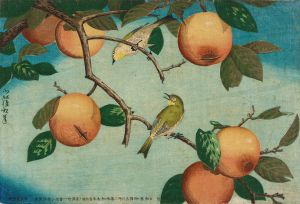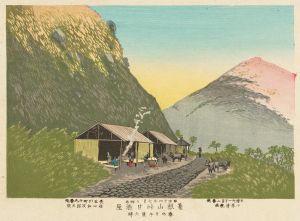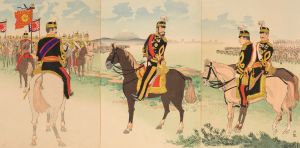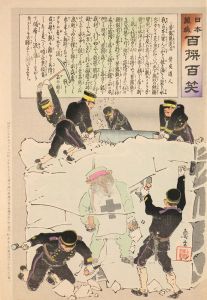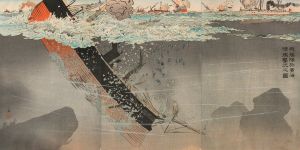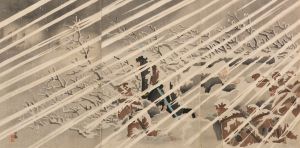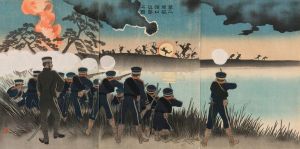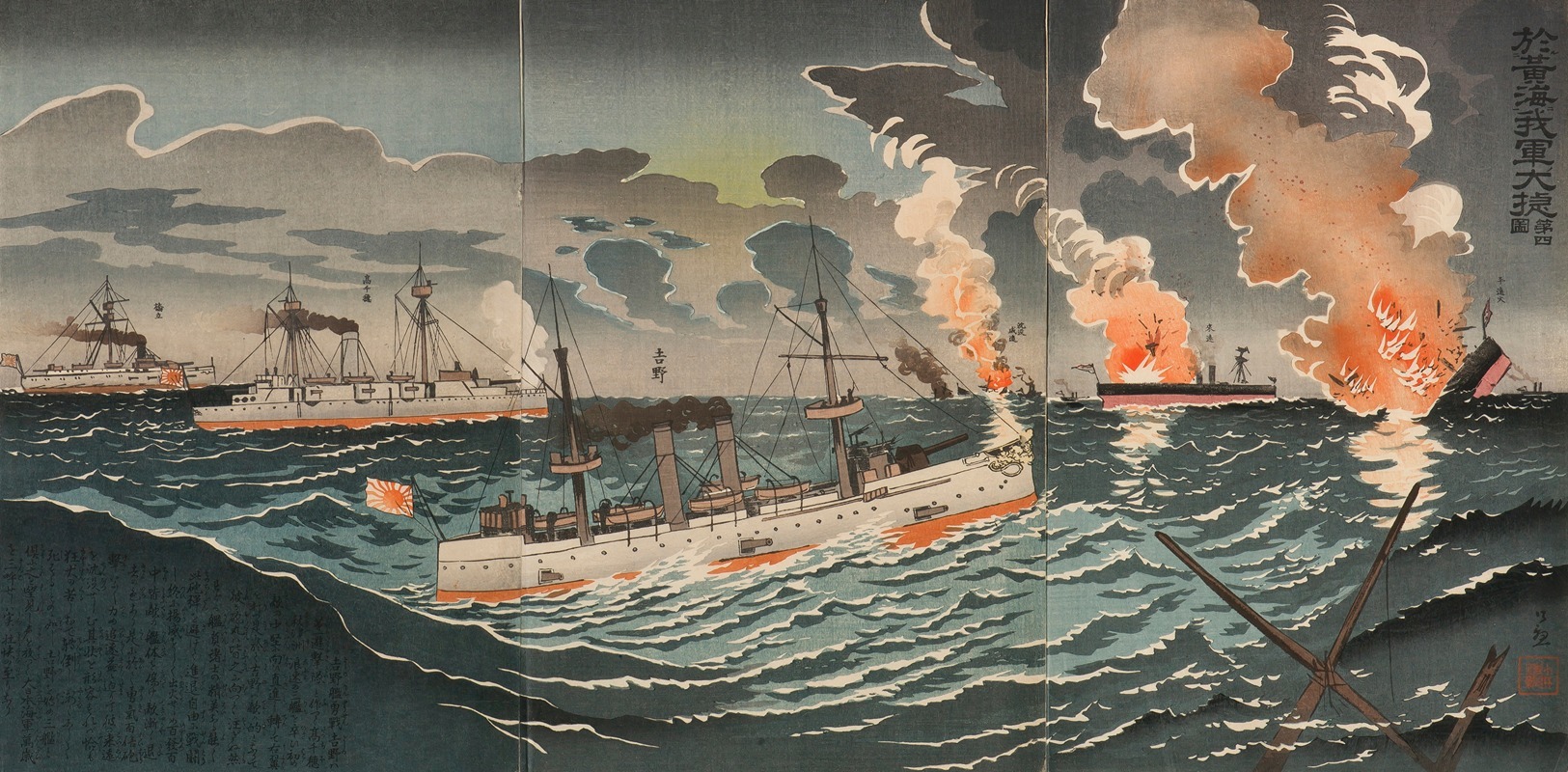
Great Victory of Our Forces in the Yellow Sea; Number Four
A hand-painted replica of Kobayashi Kiyochika’s masterpiece Great Victory of Our Forces in the Yellow Sea; Number Four, meticulously crafted by professional artists to capture the true essence of the original. Each piece is created with museum-quality canvas and rare mineral pigments, carefully painted by experienced artists with delicate brushstrokes and rich, layered colors to perfectly recreate the texture of the original artwork. Unlike machine-printed reproductions, this hand-painted version brings the painting to life, infused with the artist’s emotions and skill in every stroke. Whether for personal collection or home decoration, it instantly elevates the artistic atmosphere of any space.
"Great Victory of Our Forces in the Yellow Sea; Number Four" is a woodblock print by the renowned Japanese artist Kobayashi Kiyochika, known for his work during the Meiji period. Kiyochika was an influential figure in the ukiyo-e tradition, which is a genre of Japanese art that flourished from the 17th through the 19th centuries. He is particularly noted for his innovative approach to the traditional woodblock print, incorporating Western techniques and perspectives.
This particular print is part of a series that depicts scenes from the First Sino-Japanese War (1894-1895), a conflict between the Qing Dynasty of China and the Empire of Japan primarily over control of Korea. The war marked a significant shift in regional power dynamics, showcasing Japan's growing military capabilities and modernization efforts following the Meiji Restoration.
The Battle of the Yellow Sea, which this print likely references, was a naval engagement that took place on September 17, 1894. It was one of the major battles of the First Sino-Japanese War and involved the fleets of both nations. The Japanese Combined Fleet, commanded by Admiral Itō Sukeyuki, faced off against the Beiyang Fleet of China, commanded by Admiral Ding Ruchang. The battle resulted in a decisive victory for Japan, further establishing its naval dominance in East Asia.
Kiyochika's work often reflects the nationalistic fervor and pride of Japan during this period, capturing the drama and intensity of military engagements. His prints are characterized by their dynamic compositions and use of light and shadow, which were influenced by Western art techniques. This fusion of styles helped to convey the modernity and technological advancements of Japan's military forces.
In "Great Victory of Our Forces in the Yellow Sea; Number Four," Kiyochika likely employs these techniques to dramatize the scene, emphasizing the power and precision of the Japanese navy. The print would have served both as a piece of art and as a form of propaganda, celebrating Japan's successes and bolstering national morale.
Kiyochika's series on the First Sino-Japanese War is significant not only for its artistic merit but also for its historical documentation of the conflict. These prints provide insight into the Japanese perspective on the war and reflect the broader cultural and political shifts occurring in Japan at the time. They are valuable resources for understanding the intersection of art, history, and national identity during the Meiji era.
Overall, Kobayashi Kiyochika's "Great Victory of Our Forces in the Yellow Sea; Number Four" is a testament to the artist's skill and the historical context of his work. It remains an important piece for both art historians and those interested in the history of Japan's modernization and military expansion.





